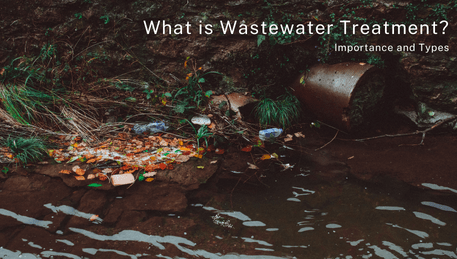Water is the most important resource for all living creatures on the planet. Despite this, billions of people around the world are struggling to get clean water on a daily basis. Water shortage has developed in some areas due to excessive usage. So waste water recycling is necessary for eliminating harmful toxins and pollutants from the water and purifying it for reuse.
Wastewater is created by many industrial operations, including mining, energy production, oil refineries, breweries, dairy processing, chemical manufacture, food preparation, and many more. The process converts wastewater into water that can be released back into the environment is known as wastewater treatment. This process reduces impurities from wastewater and turns it into an effluent that may be reused back into the water cycle. The direct or indirect use of treated wastewater effluent for beneficial uses is referred to as wastewater recycling, reclamation, or reuse. Recycled water can be used for flushing toilets, irrigation of golf courses, cooling water for power plants and refineries, irrigation of public parks, landscaping, artificial lakes and waterfalls, dust control during road construction, concrete mixing, site cleanup, and other construction-related tasks.
Cleaning and preserving water are the main objectives of wastewater management. This means that water must be sufficiently clean to be used for industrial purposes as well as human consumption and cleaning. Additionally, it ought to be pure enough to be dumped into lakes, rivers, and oceans after usage. The collection and treatment of wastewater are both parts of wastewater management. Additionally, it requires managing finances, planning, designing, maintaining, monitoring, and assessing the overall effectiveness of wastewater treatment facilities.
Elements in wastewater are harmful to both people and the environment. Wastewater treatment facilities aid in water purification and do away with problems like those that are now present in developing nations. Water treatment facilities are made to enhance the natural process of water purification. Wastewater is made up of dangerous substances that have been dumped into rivers, lakes, and oceans after becoming too filthy for human consumption. These substances affect both humans and marine life. Due to the negative consequences of wastewater, the government is attempting to lessen water pollution by making wastewater treatment a requirement in order to lessen the impact of water scarcity globally and wastewater recycling plants are being used for treating waste water and reusing it.
Sewage Treatment Plants (STP) and Effluent Treatment Plants (ETP) are two commonly used wastewater treatment plants for eliminating contaminants in order to make the water safe to release into the environment. This water can be used for agricultural purpose, toilet flushing, street washing etc.
What is Sewage Treatment Plants (STP)?
Sewage Treatment Plants hold wastewater from households and workplaces. It contains paper, food scraps, toilet and bathroom sink effluent, human waste, and other households. It involves nutrient removal in the early phase, and aerobic microorganisms are released into sewage treatment plants in the second phase to use the organic components of the sewage and minimize toxicity.
What is Effluent Treatment Plants (ETP)?
Effluent treatment plant is a wastewater treatment process used to treat wastewater in Industries with a high risk of serious water contamination like textiles, chemicals, dissolved organic matters, heavy metals, suspended particles, oil & grease, and other contaminants from the wastewater. These plants use RO, ultraviolet lamp usage, ultra-filtration, activated carbon, etc to treat wastewater and give pure water that can be used for various reasons.
Conclusion: Wastewater treatment is a long-term solution for water crisis for producing large amounts of fresh usable water.

